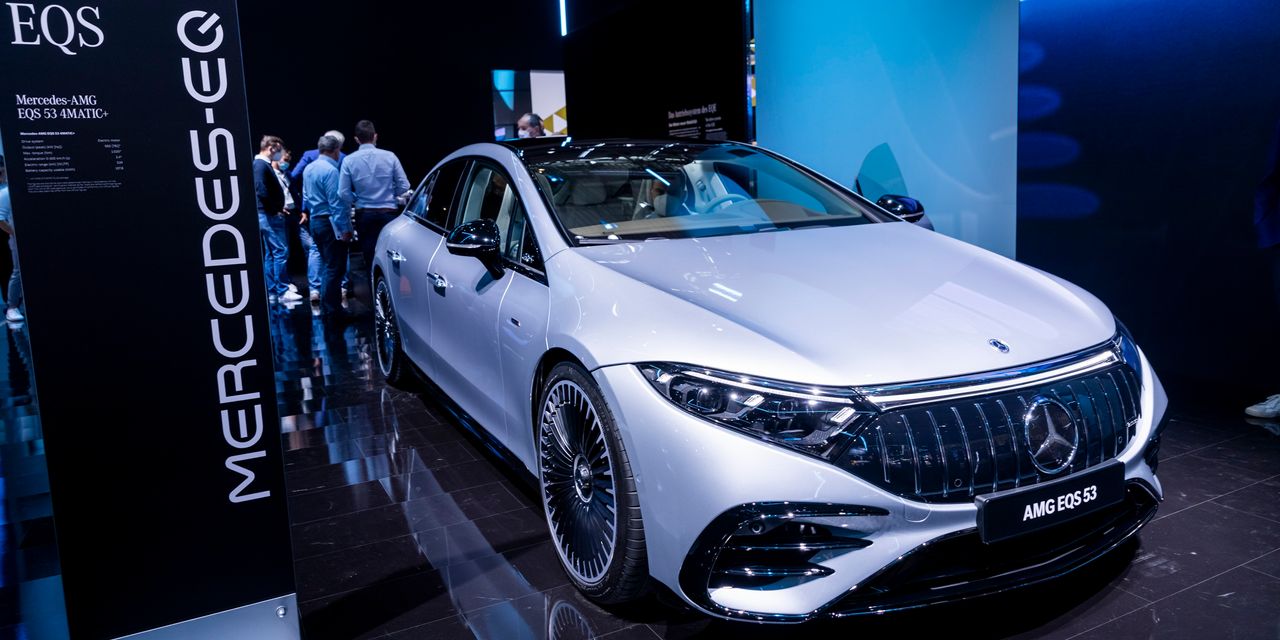
Mercedes-Benz DMLRY 3.83% cars promise a thrilling ride, but investors may be safer in a Freightliner rig.
The long-awaited two-way split of German automotive giant Daimler completed Friday. It leaves shareholders with two stocks to ponder: a would-be Tesla peer in Mercedes-Benz and a restructuring story in Daimler Truck. For all the attractions of the former’s luxury brand, the latter has a less risky path forward.
Daimler Truck, whose newly listed shares rose 5% in morning trading Friday, is by some distance the world’s largest heavy-truck manufacturer, but it has always played second fiddle to the consumer-focused car business within the group. For years, that allowed the truck and bus business to get away with poor performance. In the third quarter its adjusted return on sales—a metric equivalent to operating margin—was 5.5%, half that of listed peer Volvo Group. The split, announced by Chief Executive Ola Källenius in February, shines a brighter light on that underperformance.
A similar tactic is at work a layer down the corporate hierarchy. At a capital markets day last month, Daimler Truck for the first time split out the contribution margins of its various divisions. It turns out that the North American big-rig business, led by the Freightliner brand, generated a healthy 11.5% margin in pre-pandemic 2019, while the unit that makes trucks with the Mercedes-Benz badge barely broke even, despite being the market leader in Europe and Brazil. The company has hired a new boss with a mandate to reduce fixed costs.
While cutting costs in the unionized German industrial sector is never easy, it is a familiar road. Daimler itself has been on it since Mr. Källenius took over in May 2019. The market environment is also favorable, which might lighten the task. Truck demand is strong as consumers continue to favor goods over services and e-commerce drives investment in logistics.
Mercedes-Benz is embarking on a path less trodden. Mr. Källenius’s vision for Daimler’s better-known half can be summarized in two words: luxury and electric.
Focusing squarely on luxury reverses the dominant German automotive strategy of the past two decades, pursued by Mercedes-Benz, BMW and Audi alike, which involved expansion into more mainstream categories. The result could be higher margins. This year, which has been marked by lower but more lucrative sales across the industry due to car shortages, Mercedes-Benz expects an adjusted return on sales of 10% to 12%. “A luxury company should be able to manage 15%,” says Michael Muders, a fund manager at Union Investment, which is Germany’s third-largest asset manager and holds the stock.
The big hope is that Mercedes-Benz might one day attain something of the huge valuation premiums reserved for a focused luxury brand like Ferrari on the one hand, and new electric-vehicle players like Tesla and Lucid on the other. Mercedes-Benz’s flagship EQS EV sedan competes with the Lucid Air and revised Tesla Model S for today’s luxury EV buyers.
One question is to what extent Mercedes-Benz is prepared to shrink to wring more value from each car it sells. Another is the impact of EVs, which will probably cost more than traditional vehicles to make for many years, creating a headwind for margins as sales take off. The company said in July it would be all-electric by 2030, where market conditions allow.
Mr. Källenius has set a clear, logical and exciting course for Mercedes-Benz, but it will involve deep transformation. Promises of cost reductions at Daimler Truck may prove easier to deliver on.
Heard Stock-Picking Leaderboard
Copyright ©2021 Dow Jones & Company, Inc. All Rights Reserved. 87990cbe856818d5eddac44c7b1cdeb8








